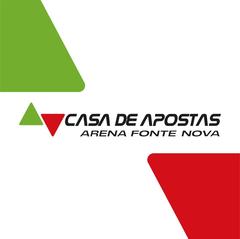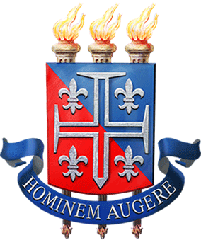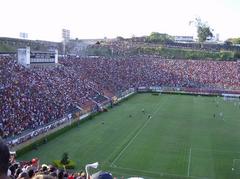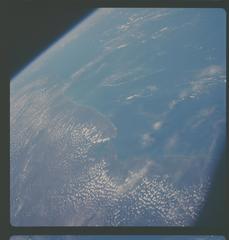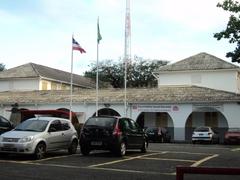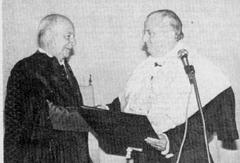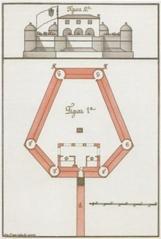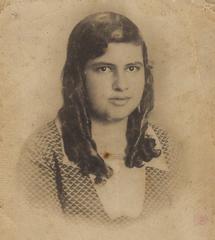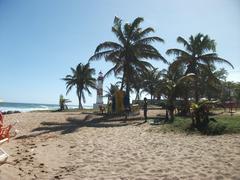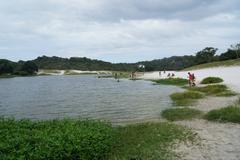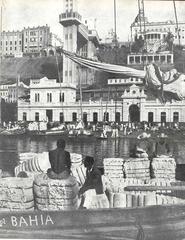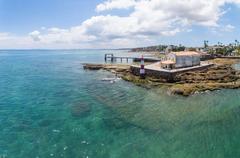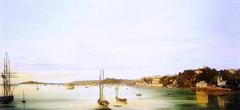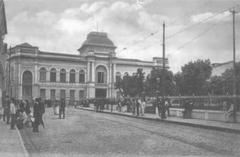Historic Centre of Salvador da Bahia: Visiting Hours, Tickets, and Travel Guide
Date: 14/06/2025
Introduction: History and Cultural Significance
The Historic Centre of Salvador da Bahia—famously known as Pelourinho—is a vibrant tapestry of Brazil’s colonial heritage and Afro-Brazilian culture. Founded in 1549 as the first capital of colonial Brazil, this UNESCO World Heritage site remains a living testament to centuries of architectural splendor, cultural resilience, and historical complexity. Pelourinho’s pastel-hued colonial facades, winding cobblestone streets, and landmarks like the Catedral Basílica de Salvador and Igreja e Convento de São Francisco transport visitors back in time, while its lively festivals and music-filled squares celebrate ongoing traditions. The district’s significance is deeply tied to Brazil’s role in the transatlantic slave trade and the development of a unique Afro-Brazilian identity, visible in religious syncretism, vibrant street art, and annual celebrations like Lavagem do Bonfim and Festa de Yemanjá. For up-to-date visitor information, consult Visite Salvador and UNESCO.
Contents
- Introduction & Historical Overview
- Visiting Hours and Ticket Information
- Guided Tours and Special Events
- Travel Tips and Accessibility
- Main Attractions & Nearby Sites
- Festivals and Cultural Experiences
- Safety, Accommodation, and Practical Advice
- Frequently Asked Questions (FAQ)
- Conclusion
- References
Visiting Hours and Ticket Information
Pelourinho—being an open-air neighborhood—is accessible to visitors at all hours, though individual attractions have their own schedules and entry fees:
- Catedral Basílica de Salvador: Open Mon–Sat, 9:00 AM–5:00 PM. Free entry.
- Igreja e Convento de São Francisco: Daily, 8:00 AM–5:00 PM. Around R$10; discounts for students/seniors.
- Museu Afro-Brasileiro: Tue–Sun, 9:00 AM–5:00 PM. Approximately R$8.
- Mercado Modelo: Mon–Sat, 8:00 AM–6:00 PM. Free entry.
- Casa do Carnaval: Mon–Sat, 9:00 AM–6:00 PM. R$15.
Most museums and churches close on Mondays and national holidays. Check official websites or local tourist offices for updates before your visit.
Guided Tours and Special Events
Guided tours are highly recommended to gain deeper insight into the district’s layered history and lively present. Walking and themed tours—focusing on Afro-Brazilian culture, architecture, or gastronomy—can be booked through local agencies or online platforms. Tours typically last 2–4 hours.
Pelourinho is at its most energetic during major events:
- Carnaval: February/March, with street parades and music.
- Lavagem do Bonfim: January, featuring religious processions.
- Festa de Yemanjá: February 2, honoring the Afro-Brazilian sea goddess.
For a more immersive experience, time your visit to coincide with these celebrations.
Travel Tips and Accessibility
- Getting There: The Historic Centre is 28 km from Salvador’s international airport. Taxis, ride-hailing apps, and airport shuttles are convenient transfer options (UNESCO).
- Local Transport: Walk within the district to appreciate its charm. Use the Elevador Lacerda (6:00 AM–11:00 PM, R$0.15 per ride) to traverse between upper and lower city levels.
- Accessibility: Many streets are steep and cobblestoned, posing challenges for wheelchairs and strollers. Some museums and the elevator are accessible.
- Safety: Visit during daylight and stick to well-trafficked areas. At night, use taxis or ride-hailing services (World Nomads).
Main Attractions & Nearby Sites
Pelourinho Neighborhood
The heart of Salvador’s historic district, known for its colorful buildings, lively music, and artisan shops (Wikipedia).
Igreja e Convento de São Francisco
Baroque masterpiece adorned with gold-leafed woodwork and Portuguese azulejos (Google Arts & Culture).
Catedral Basílica de Salvador
17th-century cathedral with ornate interiors and a rich religious history (IHeartBrazil).
Elevador Lacerda
Art deco public elevator offering panoramic bay views (IHeartBrazil).
Mercado Modelo
A bustling market for Bahian handicrafts and traditional foods (NextStopBrazil).
Rio Branco Palace
Neoclassical palace with a museum and scenic balconies (IHeartBrazil).
Other Highlights
- Largo do Pelourinho & Largo Terreiro de Jesus: Squares hosting festivals and street performances.
- Museu Afro-Brasileiro: Artifacts and exhibitions on African heritage and Candomblé.
- Casa do Carnaval: Interactive exhibits on Salvador’s famed Carnival (ClassAdventureTravel).
- Jorge Amado Foundation: Literary museum in a restored mansion (NextStopBrazil).
- Porto da Barra Beach & Farol da Barra: Popular for swimming, sunsets, and a maritime museum.
- Rio Vermelho District: Nightlife and renowned Bahian street food.
Festivals and Cultural Experiences
- Capoeira Performances: Watch or join classes in Pelourinho’s squares (NextStopBrazil).
- Candomblé Ceremonies: Respectful visitors can attend public rituals at local cultural centers (IHeartBrazil).
- Music & Dance: Enjoy Olodum drumming, samba, axé, and afoxé throughout the year.
Safety, Accommodation, and Practical Advice
- Accommodation: Stay in Pelourinho or Santo Antônio Além do Carmo for historic charm and proximity to attractions. Boutique hotels in colonial mansions offer unique experiences (London and the World).
- Money: Use ATMs in secure locations. Credit cards are widely accepted, but carry some cash for small purchases.
- Health: Drink only bottled or filtered water. Bring sunscreen, a hat, and comfortable shoes.
- Language: Portuguese is predominant. Learn basic phrases or use translation apps.
Frequently Asked Questions (FAQ)
Q: What are the visiting hours for Pelourinho and its main attractions?
A: Pelourinho is open 24/7; most museums and churches are open 9:00 AM–5:00 PM, Tuesday through Sunday.
Q: Are tickets required for attractions?
A: Entry to the neighborhood is free. Museums and some churches charge a fee (R$5–R$20).
Q: Is the area accessible for disabled visitors?
A: Some attractions have ramps or accessible features, but steep cobblestone streets may be challenging.
Q: What is the best way to get from the airport to the Historic Centre?
A: Taxis, ride-hailing apps, and shuttles are recommended.
Q: Is it safe to visit at night?
A: Use caution after dark; stick to busy areas and use taxis or rideshare services.
Q: What are the top festivals and events?
A: Carnaval, Festa de Yemanjá, and Lavagem do Bonfim are major annual highlights.
Conclusion
Salvador da Bahia’s Historic Centre is a living museum, brimming with history, art, and Afro-Brazilian culture. By planning ahead—checking opening hours, booking guided tours, and following safety tips—you’ll unlock a rich and memorable travel experience. Don’t miss the chance to explore the vibrant streets, relish local cuisine, and immerse yourself in the district’s unique blend of past and present. For further planning, consult the official tourism website, download the Audiala app for offline maps and audio tours, and follow us on social media for the latest updates.
Suggested Visuals
- High-resolution images of Pelourinho’s streets, São Francisco’s gilded interiors, Elevador Lacerda views, and festival scenes. Use descriptive alt tags for accessibility and SEO.
References
- Visite Salvador
- UNESCO
- Wikipedia
- DoinBrazil
- Google Arts & Culture
- IHeartBrazil
- NextStopBrazil
- ClassAdventureTravel
- London and the World
- Bahia.ws
- World Nomads
- Saca Voyage
- Salvador da Bahia
- Mad-Traveller
- Above Us Only Skies
